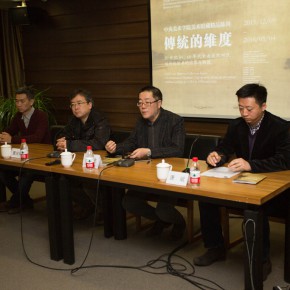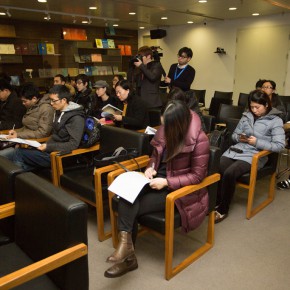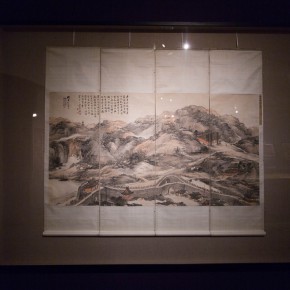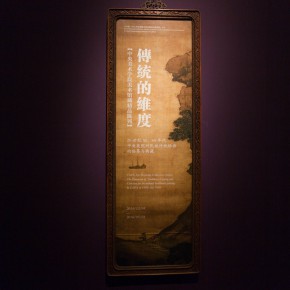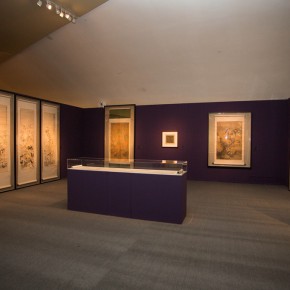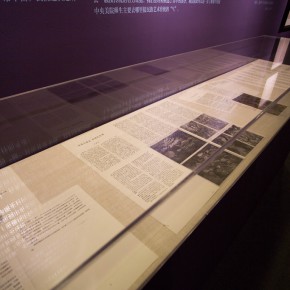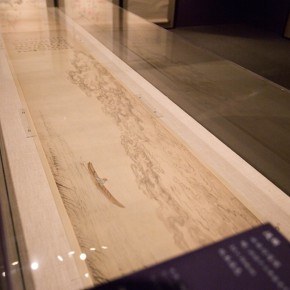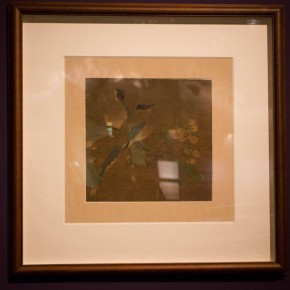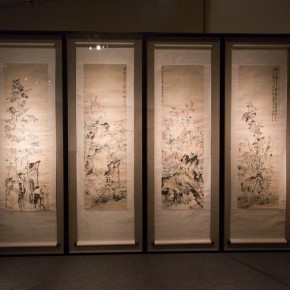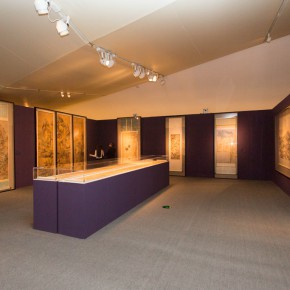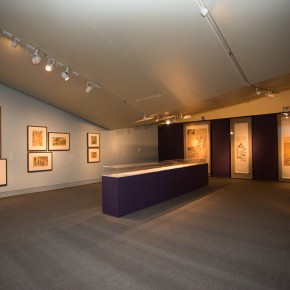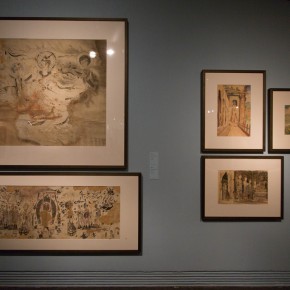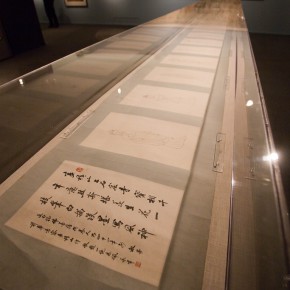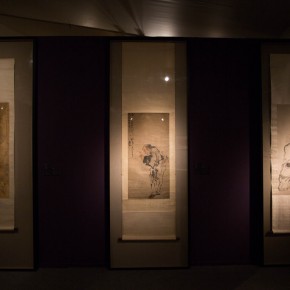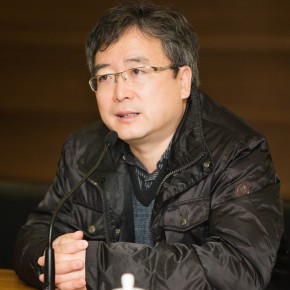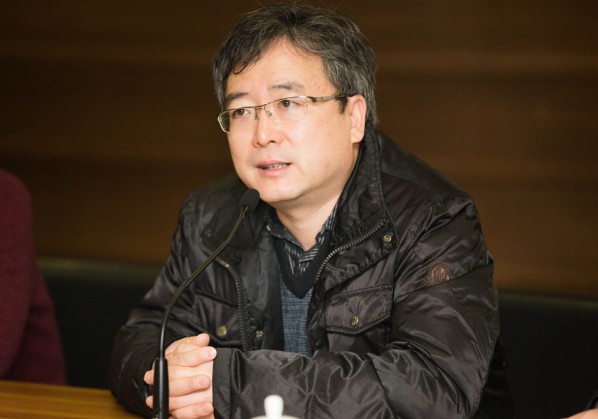
On December 9, 2015, “The Dimension of Tradition – Copying and the Collection of the National Traditional Painting by CAFA in the 1950s and 1960s” opened at CAFA Art Museum, it is the 4th round of the CAFA Art Museum Collection Series. During the exhibition period, the curator of the exhibition Prof. Cao Qinghui from CAFA was interviewed by CAFA ART INFO on topics such as the relationship between collections and exhibition planning, researching method of art history, as well as any related problems faced by Cao who is the deputy director of the school library and the curator.
Interview time: January 18, 2016
Interview venue: the meeting room of the CAFA Library
Interviewee: Cao Qinghui (hereinafter referred to Cao)
Interviewer and editor: Yu Ya (hereinafter referred to CAFA ART INFO)
Courtesy of Cao Qinghui and CAFA ART INFO, translated by Chen Peihua and edited by Sue/CAFA ART INFO
CAFA ART INFO: As the 4th round of the CAFA Art Museum Collection Series, like the previous “National Beiping Art School” and “Merging”, “The Dimension of Tradition” also has a node in time, namely “the 1950s and 1960s”, would you like to talk about the origin of previous themes? Why is the exhibition divided into the two parts of “going out” and “coming in”?Cao: It is a fact that it starts with the National Exhibition Season of the Brilliant Collection from the Art Museum in China organized by the Ministry of Culture in 2012, and CAFA Art Museum hopes to borrow it to do some academic research based on the collections, and to promote the presentation of a series of exhibitions by deeply advancing the academic research. Along with gradually clearing up the collections, at the beginning we designed to launch the “Selected Works Created in the Period of the National Beiping Art School”. Along with further discussions on the process of specific implementation, the conception was purer, so it was divided into oil painting and Chinese painting. As this collection exhibition started according to the actual collections, the context of the research must be supported by the collections, so that the 3rd round became an exhibition to discuss how “National Beiping Art School” became the Central Academy of Fine Art, in accordance with a time sequence, it was this problem that was the focus for the 3rd round “Merging”.
When it came to the 4th round entitled “The Dimension of Tradition”, first of all, it demanded that the department of collections offer a basic situation for the collections. For example, how did China treat the problem of tradition in the 1950s and 1960s, although there was some view in the art circles, it was necessary to display the items in support of the exhibition, it was about the narrative of the exhibition. Hence, parts of the contents appeared in the process of the research through of the collections, including the traditional Chinese paintings, purchased by CAFA in the 1950s and 1960s, which belong to the part of “coming in”, and the perfectly collected copies of mural paintings from across the country finished by the teachers and students from CAFA, which belong to the part of “going out”. “The Dimension of Tradition” is through the combination of the two parts, to discuss the problem of traditional building and understanding. It is a fact that it leads us to a broader vision of the Chinese national cultural tradition, rather than being limited in a single logic.
CAFA ART INFO: Seen from the current exhibition situation, the exhibited works are perfectly preserved and some of them are the works of outstanding painters, as you are the exhibition curator, would you like to introduce the selection criteria of the exhibited ones?Cao: In the selection of the copies of mural painting, it focused on the works by famous teachers, which are perfect models, in addition there are high-quality works by students. In the selection of ancient paintings, firstly, it selected the pieces affirmed by the National Cultural Relics Appraisal Group; secondly, it presents a continued context of the art history in the dynasties of Song, Yuan, Ming and Qing; a good storage quality of the work is necessary, which refers to the basic opinions given by the National Cultural Relics Appraisal Group. In addition, the space was too small to fully showcase the collections, so we proposed that it was divided into two phases in the exhibition period from December 9, 2015 to May, 2016, which was readily accepted by the art museum.
CAFA ART INFO: Through the notices and display of the collections, on the one hand, it presents the teaching of the academy, while on the other hand, it reveals the Chinese policy of literature and art at that time, as well as the developing context in art history, would you like to introduce the situation of the policies, funding sources, and related research of art history?Cao: The study of the art history is different from the exhibition for the research of art history, the exhibition is held through physical objects to render the narrative of art history, which is different from what we see in the teaching material, the exhibition is more rich, intuitive and full and you will find that there are many problems to discuss. Such as the old teachers that copied this batch of murals at that time, discussing what they drew before and after they copied, whether there is an inheritance and innovation, it will form a historical logical relationship. In addition, although we have an original account of the ancient paintings that we bought in the 1950s and 1960s, some of the accounts are clearly marked down while others are not clear, so that we have to deduce the time when they were purchased. The main purchasing period was concentrated in the 1950s and the 1960s, it was a special situation that happened shortly after the founding of the People’s Republic of China, when the country was focusing on the transformation of Chinese painting and had a critical attitude towards Chinese literati painting. It seems contradictory to buy this batch of things in such a historical context, but it is interesting and worth studying.
CAFA ART INFO: As a collection exhibition, it is actually about the cataloguing and research of the history of the school. The cataloguing and research of the history of the school has become an integral part of the study of art history now, what are the differences in items of method and emphasis between the research of the history of the school and the research of art history that gives priority to image, style and appreciation?Cao: Because I am also involved in the planning of the exhibition in recent years, rather than individually researching and teaching students in the classroom I was also gradually transformed to the trinity thinking of the scientific research, teaching and planning, namely applying my accumulation of research and teaching in the planning of the exhibition. But in fact, our art history or textbook writing is a routine, while the single evaluation appreciation is another routine, and it is a problem that the two routines don’t straightforwardly connect the things. Of course, the occurrence and production of art history is based on the work itself, I think it is a rational logic. In fact, if one hopes to finish a work, he might go to the mountainous areas and the countryside, to travel, to learn from nature, but only the work is eventually left, so we should gradually explore the consciousness behind the creation, and also pay more attention to the study of sketches, drafts, letters and manuscripts along with the work. If it only borrows the work itself to discuss, being short of the relevant things, I think it would be a big loss in the research of art history. In addition, it is possible to build a relationship between photos, a personal photograph album and art history, because photos are the most direct heritage with the use of photographic technology in the 20th Century. Through the photos, you learn of the life and experiences of the characters and the relationship with friends, which heavily promotes the research of art history.
CAFA ART INFO: It “restores” as much as possible.Cao: Yes, but it is actually an illusion, the so-called “illusion” is close to the feeling. For example, when I planned “Sculpture of Love” the exhibition of Wang Linyi and Wang Henei, he used photos to restore the living space of the couple at that time, but it was still far from reality. We are still trying our best to restore history, although it is still similar to the dream. In addition, if CAFA has never collected this batch of ancient paintings in the dynasties of Song, Yuan, Ming, Qing, we will think about where they will be hung, and how they are preserved. We discuss the background and the winding collection stories of each painting, and even though these paintings might not appear in Beijing, it is still a very wonderful thing, worth discussing. Starting from “National Beiping Art School” to the present “The Dimension of Tradition”, I think the only regret is it is impossible to have in-depth research on each piece of work. In addition, although the exhibition is still incomplete, it should boldly push it into the public domain, you will find that after the exhibition faces the public it becomes the “crowdfunding” of knowledge. Through the scrutiny and correcting of the public, it makes the exhibition itself a good knowledge test platform.
CAFA ART INFO: As you are the deputy director of the school library, would you like to answer another specific question, as to whether some of the materials of the school history is stored by the library in addition to the art museum and the archives?Cao: The library does not save a file at present, as it mainly preserves some books and rare editions, such as the old books related to art history, and the old books containing a lot of comic strips. In the next step, we will launch related exhibitions around books based on the advantages of the library as far as possible and might also have a related cooperation with other schools and departments. For example, the viewer can intuitively learn from the books in the Republic of China, while they don’t need to see the specific content. In addition, CAFA is one of the leading schools across the country, owning more resources than any other, so that, after the collection and display of the books, it might promote the relevant writing of professional papers, which is also a very important significance.
CAFA ART INFO: In addition to involving in the work of the school’s history, and the planning of exhibitions of the old teachers, you are also through the exhibition able to promote young artists. For the planning of exhibitions for the youths, what do you mainly think about?Cao: The participating artists in my planned exhibitions for the youths are largely restricted to the ones in Beijing, centered on CAFA, linked to the other universities such as Renmin University of China, Capital University, Beijing Institute of Clothing Technology, Tsinghua University, etc. In addition to planning exhibitions, I mainly create a converted link, namely “Talking about Creation”. Because I think youths quickly consume resources today, once the students graduate, their graduate works will be rapidly consumed and they are constantly consumed in a variety of forms, while the follow-up creativity fails to supplement it. Why is the “Talking about Creation” held? I hope to build a platform outside the school for the teachers and students to discuss art with each other. It is unfolded in a specific form so the young artists make a PPT to explain their own creative process and ideas, and communicate with the teachers from different departments and schools. In addition, we also ask the teachers who participate in the “Talking about Creation”, to pocket their pride, being as artists to dialogue and communicate with youths, so that it will form a better subsequent interaction and cultivation for the young artists.
Courtesy of Cao Qinghui and CAFA ART INFO, translated by Chen Peihua and edited by Sue/CAFA ART INFO


